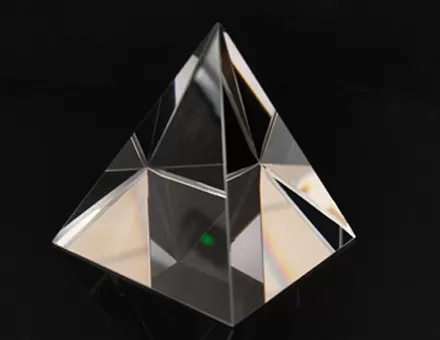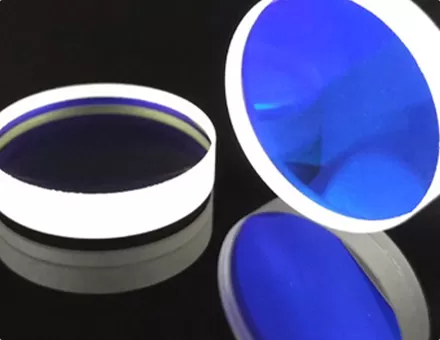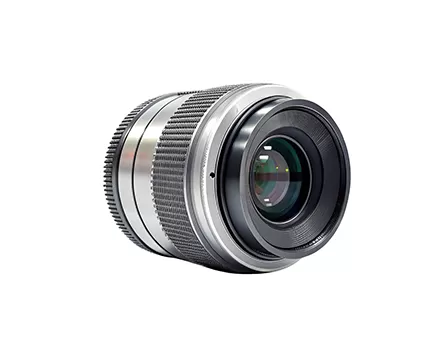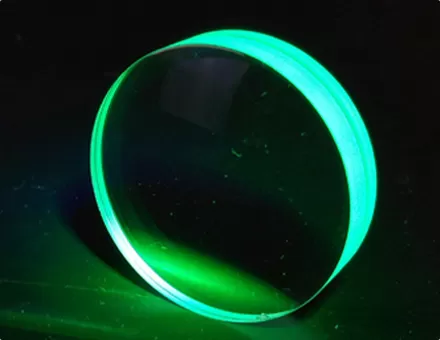Two orthogonal directions of a cylindrical optical lens define the reference system: the power direction and the non-power direction. The first direction is called the "refractive direction" because it runs along the curved length of the lens and is the only axis with refractive power. The second direction is called the "non-power direction" because it extends along the length of the lens without any power.
The length of a cylindrical optical lens along the non-power direction can be extended without affecting the power of the lens. Cylindrical optical lenses can have a variety of form factors, including rectangular, square, circular, and elliptical.
1. The meaning of using cylindrical optical lenses
Cylindrical optical lenses are similar to spherical lenses in the sense that they use curved surfaces to converge or diverge light, but they have refractive power in only one dimension and do not affect light in the vertical dimension. This is not possible with spherical lenses because the light will be uniformly focused or divergent in a rotationally symmetric way.
Cylindrical optical lenses play an important role in the manipulation and shaping of laser light and are used to form laser sheets and to circularize elliptical beams. Due to the asymmetric nature of cylindrical optical lenses and the specialized manufacturing technology required, it is important to formulate and properly control center, wedge and axial twist.
Therefore, cylindrical optical lenses require specialized equipment and manufacturing skills, as well as a unique coordinate system to effectively refer to the lens' features.
2. What are the types of cylindrical lenses
Cylindrical lenses are generally used to focus incoming light onto a line, or to change the aspect ratio of an image. It is usually imaged in a line, and the direction of the beam can be controlled. The application of lenses in the optical industry has been very extensive. In different fields, according to the specific differences of the lenses, they play different roles. The types of cylindrical lenses mainly include spherical lenses and aspherical lenses.
Spherical lenses mainly include plano-convex lenses, plano-concave lenses, biconcave lenses, and biconvex lenses. Aspherical lenses include regular aspherical lenses and irregular aspherical lenses. Today we mainly look at regular aspherical lenses and cylindrical lenses. See a specific overview of cylindrical lenses.
Cylindrical lenses are aspherical lenses, which can effectively reduce spherical aberration and chromatic aberration. The types of cylindrical lenses include plano-convex cylindrical lenses, biconvex cylindrical lenses, and biconcave cylindrical lenses.
Cylindrical lenses are mainly used to change the design requirements of the imaging size, and can also be used in linear detector lighting, barcode scanning, holographic lighting, optical information processing, laser radiation, etc. Optical cylindrical lenses also have a wide range of applications in intense laser systems and synchrotron radiation beamlines.
3. The difference between spherical lens and cylindrical lens
(1) A spherical lens is a reflective surface that is part of a sphere. The surface can be convex or concave.
Concave spherical lenses have inwardly convex reflective surfaces and reflect light inwards. Convex spherical lenses have reflective surfaces that are convex toward the light source and reflect light outward.
Substrate materials for spherical lenses include various optical glasses, ultraviolet fused silica, infrared fused silica and calcium fluoride (CaF2), magnesium fluoride (MgF2), zinc selenide (ZnSe), germanium (Ge), silicon (Si) etc., and various optical films such as anti-reflection films, high-reflection films, beam splitting films, metal films, etc. are provided. Broadband anti-reflection films can be applied in the ultraviolet, visible light, near-infrared and mid-infrared wavelengths.
(2) The difference between spherical lens and cylindrical lens is that the cylindrical lens is an aspherical lens, which can effectively reduce spherical aberration and chromatic aberration. It is divided into plano-convex cylindrical lens, plano-concave cylindrical lens, biconvex cylindrical lens, biconcave cylindrical lens, meniscus cylindrical lens, cylindrical cross cylindrical lens and special-shaped cylindrical lens.
(3) Different applications of spherical lenses and cylindrical lenses
The application of spherical lenses is the imaging with array lenses, which is used in monitoring, microscopy and other fields. Spherical and optical aberrations are corrected by balsaming lenses for ideal image quality.
The requirements for parts of cylindrical lens are also getting higher and higher, especially in high-precision testing instruments and devices such as cavity chips of high-power laser resonators and long-distance line interferometers.


















 EN
EN





